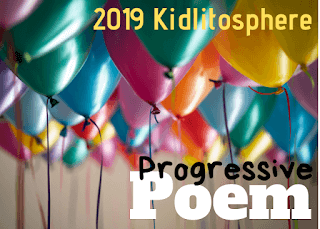
Welcome to Poetry Friday!
It’s a little crazy at our house these days. In the next month we’ll have one child graduate from middle school, another graduate from high school, and my book Soccerverse: Poems about Soccer will make its way into the world!
Soccerverse includes 22 poems about everything soccer—the ball, shin guards, uniforms, teammates, dribbling, fans, and even the handshake after the game. Some of the poems are whimsical, some funny, and some address the more difficult emotions that are part of the game. The poems use 13 different forms, which I describe in a note at the end. The book was illustrated by Edson Ikê, a fabulous graphic designer from Brazil (perfect, right?). The images are bold, colorful, and creative, and best of all, the kids in the book reflect the beautiful diversity of our world. Happily, Kirkus Review says Soccerverse is “A pitch-perfect ode to the details and delights of playing soccer.”
To celebrate the publication of the book, I’m visiting a few blogs, including Michelle Heidenrich Barnes’ Today’s Little Ditty, where I’m currently in the “Spotlight.” This month’s challenge is to write a poem giving instructions to an inanimate object about how to do its job. The idea came from my poem “Instructions for the Field,” which you can read on Michelle’s blog.
I thought it might be fun to share the first draft of that same poem today. Here it is in all its first-draft glory:
INSTRUCTIONS FOR BEING A SOCCER FIELD
Lie flat.
Never slouch or slump or pull
The ball into a pocket.
Keep your toes up.
Use your hands
At the other end and let
The spiders weave the nets.
Grow a thick green
Beard. Never shave,
But keep it trim.
Wear the same striped suit
Every day. Don’t
Giggle when we tickle
You with our feet.
Catch us when
We fall.
When it rains,
Gulp greedily.
Wait
For us.
It’s interesting for me to look back at this and compare it to the final draft. What strikes me first is that there’s a lot in here that stayed—Lie flat. Never slouch or slump. Most of what happened during the revision process of this particular poem was cutting. By taking words away, I was able to focus in on one image and get rid of the excess and the distractions. I like the idea of the spiders weaving the goal nets, but it’s a little much for this poem. You’ll see I even cut the extra words from the title. I also notice that the first draft seems to have two endings that work quite similarly—Catch us when/we fall and Wait/for us. I took the second one out and moved the first one to the end. As I recall, those toes stayed in there for quite a while, until I think my critique group firmly said they made no sense. Looking back, I’m a little sorry the tickling and the giggling disappeared. In any case, I’m happy to say the final draft is much stronger than the first one.
I also thought I might share a poem that didn’t make the book. This one is close to my heart because it celebrates diversity and I snuck my kids into it.
PLAYERS
Amos always kicks it hard.
Bella hates to lose.
Charlotte likes to head the ball.
Dylan wears red shoes.
Edith has the most assists.
Finley looks to pass.
Goren’s got a fierce left foot.
Hal’s allergic to grass.
Igor gives loud half-time talks.
Jody lives offside.
Kojo takes the corner kicks.
Lucy loves to slide.
Marco mumbles when he runs.
Naomi’d rather read.
Ollie makes amazing saves.
Piper’s got great speed.
Quincy draws a lot of cards.
Rachel guards the post.
Sarah wants to be a star.
Travis likes to boast.
Ulric keeps an eye on time.
Vera gives high fives.
Walter scores on penalties.
Xena sometimes dives.
Yuli cheers no matter what.
Zach can run all day.
All of us are different.
All of us can play.
I still like this poem, but even at the collection-level, less can be more. Thanks to editor Rebecca Davis, I think the collection includes just the right number and combination of poems.
I hope that you all saw Michelle’s incredible Classroom Connections series celebrating National Poetry Month. Each day a different children’s poet discussed how to bring their work into the classroom. Though we have all barely recovered from NPM, Michelle reprised the series and invited me to discuss how to bring Soccerverse to school. I hope you’ll take a look. I’m also happy to say an educator’s guide for Soccerverse will be available on my website soon!
Mary Lee asked me to point out that there are a couple of changes to the Poetry Friday calendar coming up. Michelle Kogan and Margaret Simon have swapped places. Next week, May 17 will be at Margaret’s blog, Reflections on the Teche.
One last thing, I hope you’ve noticed that my website has a new look. I want to thank Gabe Seiden at Connect4Consulting for the fabulous redesign.
Please add your link below.
Happy Poetry Friday!
Liz















